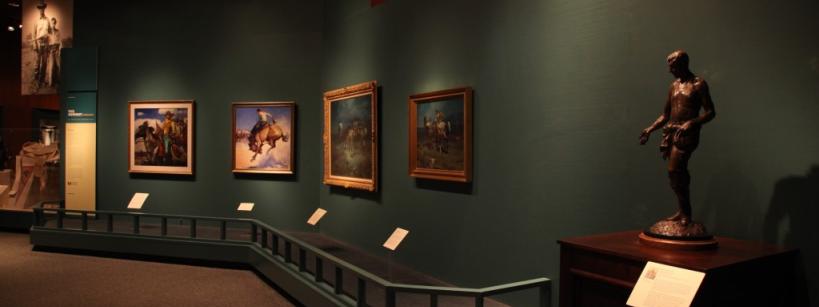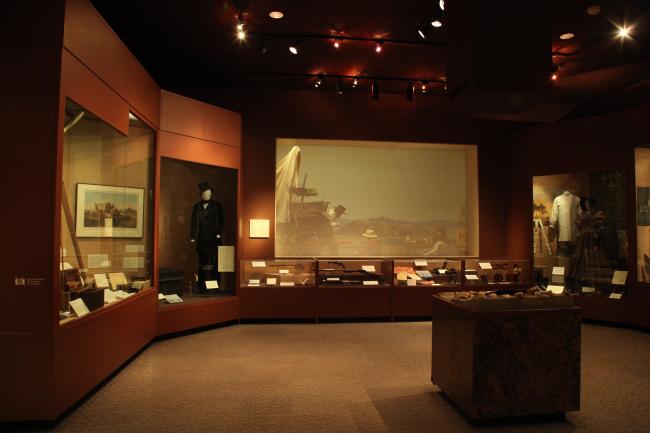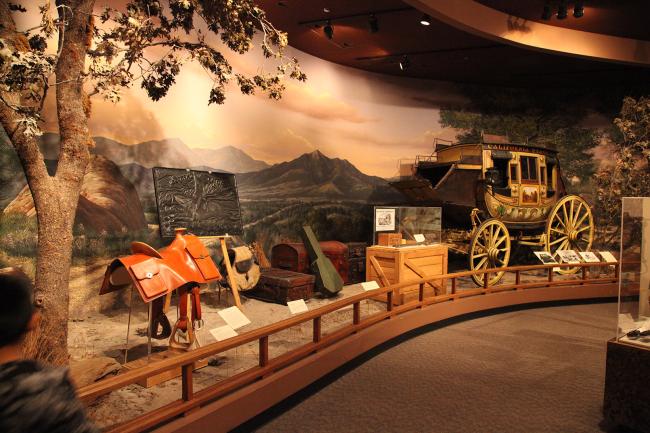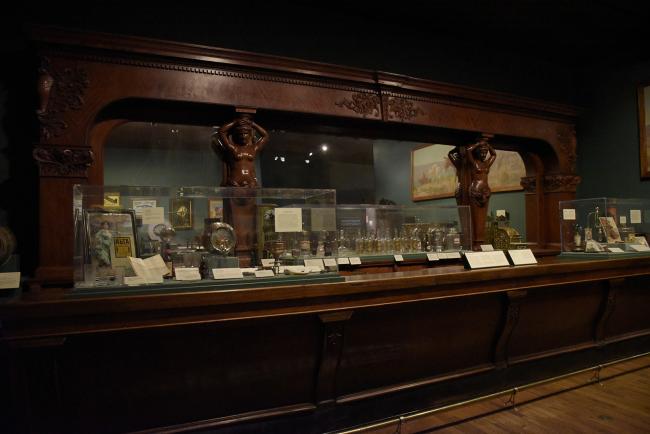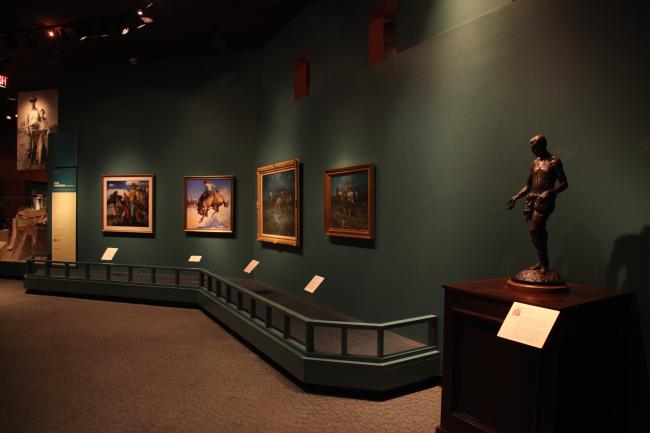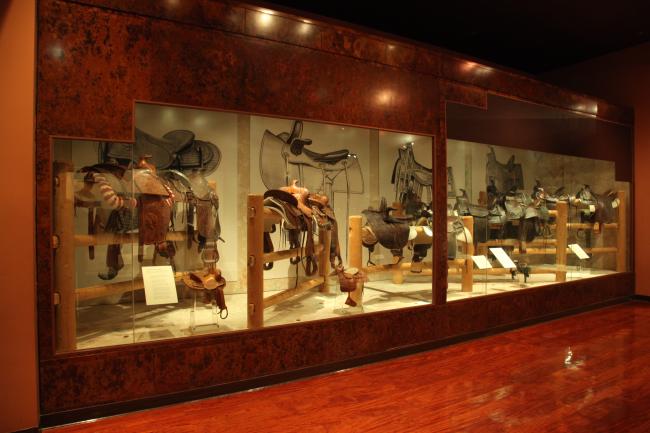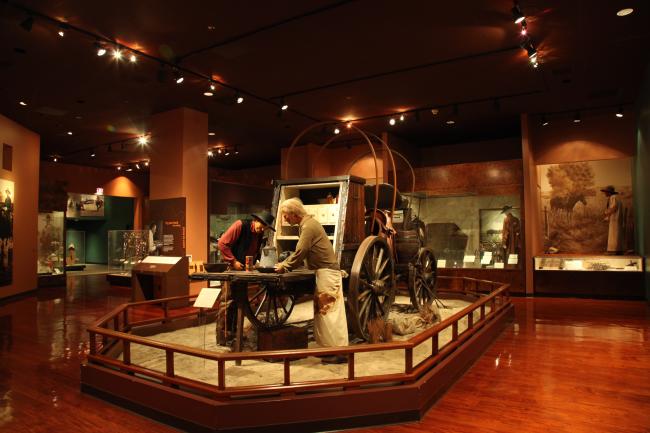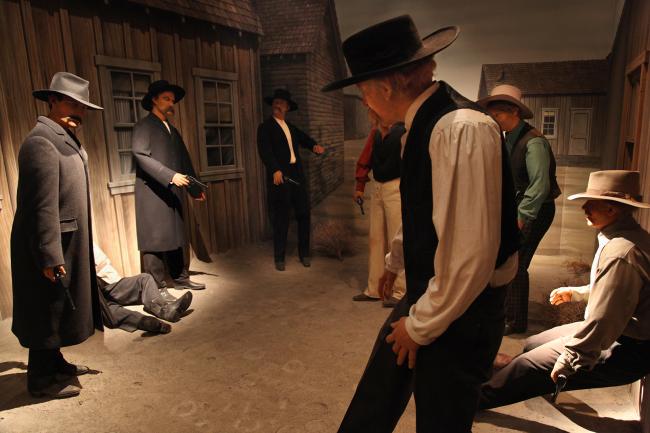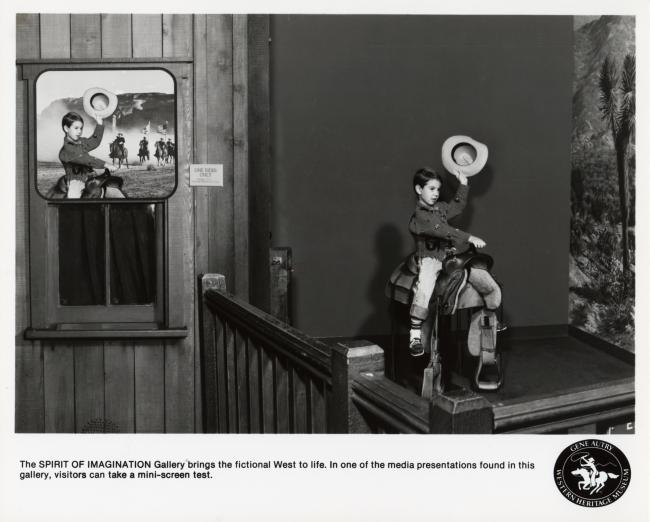By Julia Tcharfas, Collections Cataloger, Autry Museum of the American West
One goal of a museum is to conserve objects in perpetuity—stable and unchanged. By contrast, museum exhibitions are in constant state of flux. Temporary and traveling exhibits are regularly rotating within the gallery walls. Even the so-called permanent galleries undergo numerous transformations over the years.
Exhibitions come and go through a joint museum-wide effort. For museum curators, an exhibition is a carefully chosen group of objects and the labels that tell each object’s story. For the museum design team, the exhibition is a dynamic space constructed as both a conceptual and physical pathway through a theme. Museum marketing might lay claim to the exhibition title, while education staff would script different messaging for different audiences, and so forth. In the end, an exhibition could be thought of as a single whole unit made up of the sum of its parts.
For researchers, studying the history of exhibitions has become just as important as studying the historic artifacts in museum collections. Looking at museum’s exhibition history might reveal the changing trends in programming and design. Perhaps more significantly, it will also reveal the changes in values, tastes, and voices represented in the galleries.
When the Autry Museum of the American West first opened its galleries in 1988, visitors were invited to walk through seven inaugural exhibitions designed by Walt Disney’s Imagineers. These spaces were interrelated through their title, ‘Spirit of:’ Opportunity, Conquest, Community, Cowboy, Discovery, Romance, and Imagination.
Exhibits were staged over two floors with historic collections on the bottom and art and film artifacts in the galleries above. Visitors moving between the galleries would be faced with the dualities inherent in the founding collection—exploring both the history and the mythology of the ‘American West.’ Downstairs one would walk past displays on the Gold Rush and stories of migration; a historic saloon and cases with artifacts from famous outlaws; original pony express gear and an eclectic array of various work saddles; 19th century tools and clothing of the Vaqueros; and fragments of the lives of Native American cultures. Upstairs, the “imagined West” exhibitions displayed bedazzled costume of the 1950s TV cowboys, film sets and props, children’s toys, dime novels, and film posters. An art gallery showcased iconic Western paintings depicting the real and imagined landscape and people by iconic figures such as Moran, Bierstadt, Remington, John Mix Stanley, Gast, and Melrose.
“Experience the myths. Relive the dramatic history of one of the greatest epics of all times. Return to those ‘exciting days of yesteryear’ when radio, motion pictures, and television featured good guys and bad guys in a struggle to ‘win the West,’” read the Autry Museum of Western Heritage brochure.
Throughout the years these galleries have undergone many changes, and some have been replaced entirely. The museum now has a 32-year long history of rotating thematic exhibitions ranging from Katsina in Hopi Life, Route 66: The Road and the Romance, to the current interactive galleries examining Griffith Park. It has also become a place for significant exhibitions of contemporary Native American artists like Mabel McKay, Rick Bartow, and Harry Fonseca.
How then do we go about cataloging the ever-changing exhibition history?
